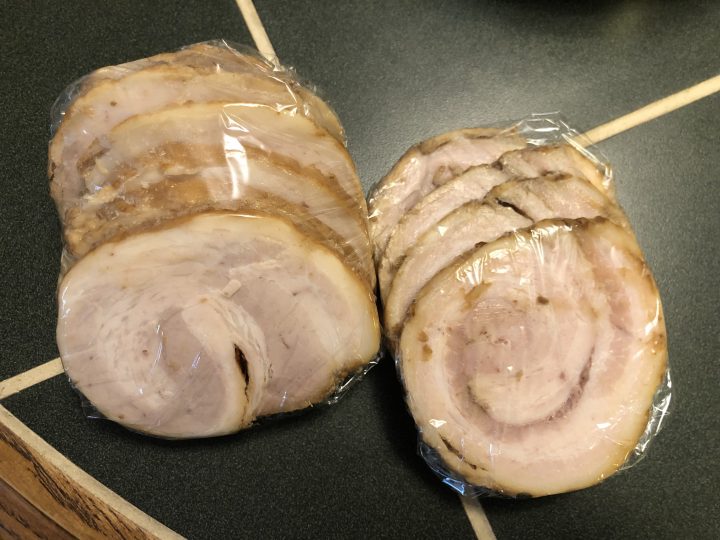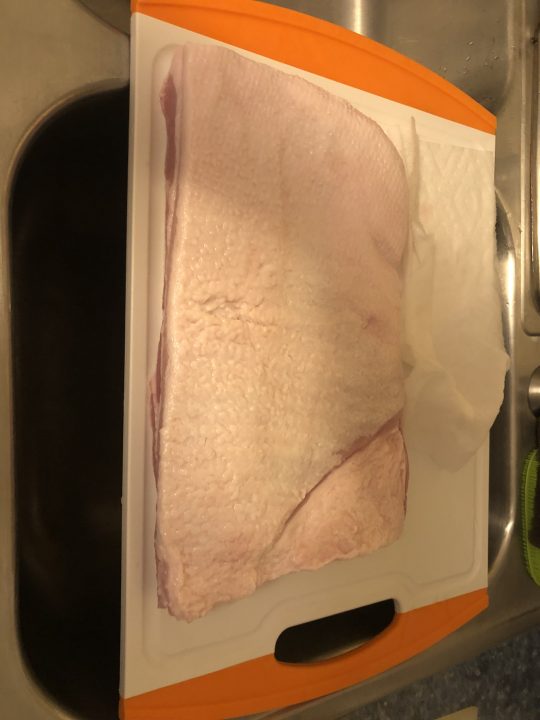Cha-shu is the Japanese adaptation of the Chinese BBQ Pork, Char-Siu. They both use Pork, but that’s where similarity ends, pretty much…
Chinese Char-Siu, is a pork dish which is roasted in sweet BBQ Sauce, while Japanese Cha-shu is often boiled in sauce/soup, instead of being roasted… What you see on Japanese Ramen Noodle is the Cha-shu, soft, fatty and melt in your mouth.
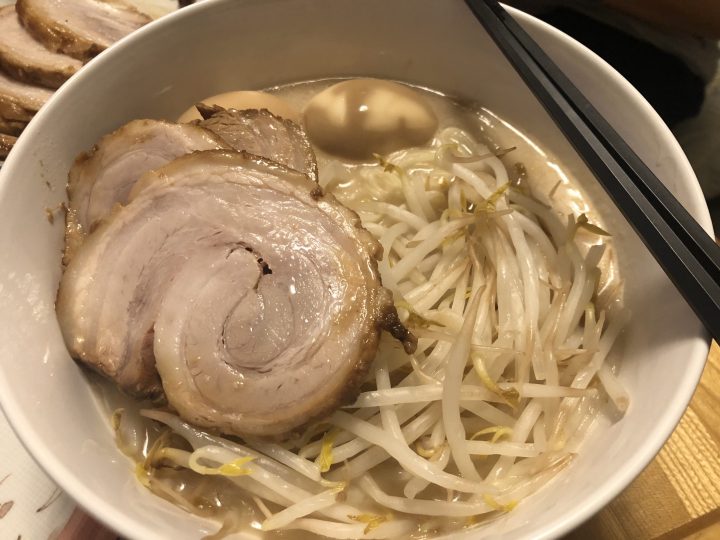
I was chatting with my uncle the other day and for some reason we were talking about Cha-shu, and then a few days later, we saw this big chunk of pork belly at Costco… Thus a Cha-Shu cooking weekend. The cooking itself does not take that much time, but you will need to wait long time while cooking… so Suggest starting in the morning 😉
Ingredients for Cha-Shu are very simple:
- Pork Belly (as big as you can fit into your pot… ours is about 6LB)
- Garlic (2 Cloves)
- Ginger (1 large piece)
- Green Onion (Green part of one bunch)
- Soy Sauce (a lot! I think I used about 20-25oz)
- Sake (about the same as Soy Sauce
- Mirin (5-10oz if you do not have, you can use sugar)
- Bonito Flakes (1 small Pack, if you have… If not, you can skip)
- String (not an ingredient, but you need to tie the pork)
Steps
- Cut the pork belly into the size that would fit in your pot.
We bought a 10LB chunk, and cut in 1/3 (and used two of them and they were a tiny bit too big…) - Roll the pork belly with the fat outside, and then tie with string very tight.
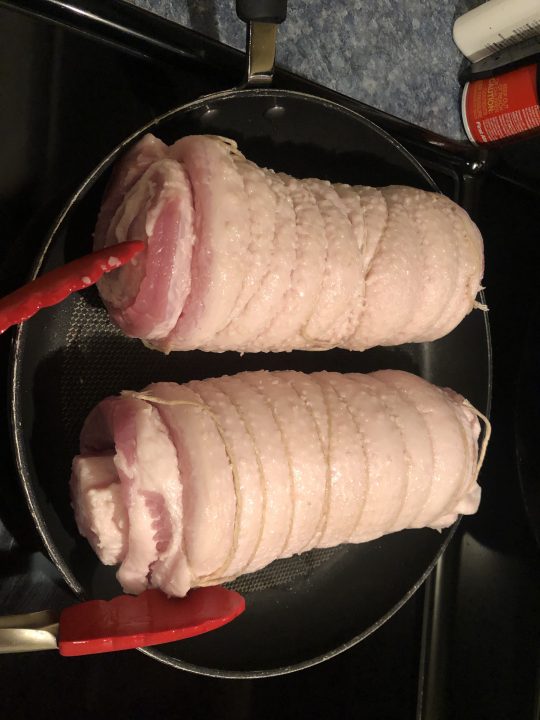
- Pan sear the rolled, tied pork in medium-low heat until fat lenders out a little and get s little brown on the out side

- Move the pork into a large pot, and fill the pot with cold water. Bring the water to boil, and then reduce the heat to simmer, and cook for at least an hour. (I cooked for an hour and a half) If the pork is not fully submerged, turn the pork about half way.
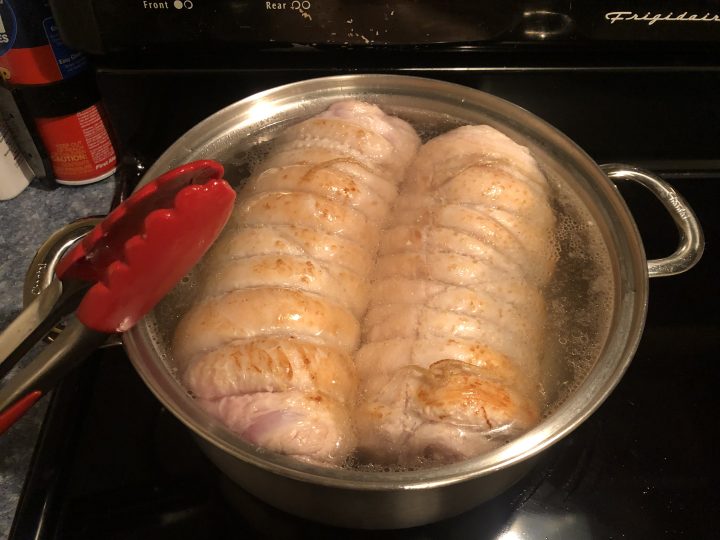
- Take out the pork very carefully (the fat on the outer layer may be very soft and fragile!) and set it aside to cool enough to touch. (While waiting, I strained the water and then separated the fat out, to used the broth to make soup later)
- Once pork is cook enough to touch, carefully rinse the pork with running water to wash off the protein foam from the boiling, and then place it back in the cleaned pot
- Combine Soy Sauce, Sake and Mirin in 2:2:1 ratio (or if you do not have mirin, replace with sugar and extra sake), and add to the pot, along with a clove of garlic, piece of ginger, and a bunch of green onion’s green part. (the ratio isn’t that important… you’ll find online recipe 10:1:1 to 1:1:1 plus water, etc… just use what you got… )
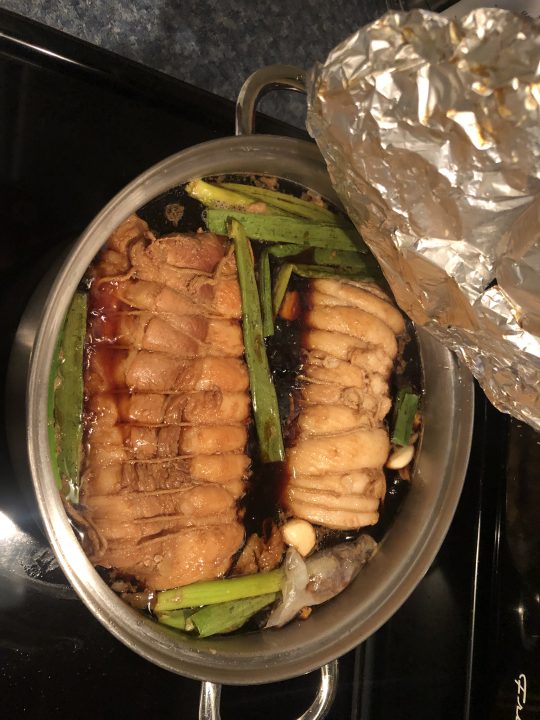
- Bring to boil, and reduce the heat to very low, and place an Otoshi-buta. (make a foil size smaller than the pot, punch a few holes, and then place on top of the meat. This floating lid will some how magically helps flavor to soak into the meat while cooking).
- After 30 min to an hour, take the post off the heat, and let it cool naturally to the room temperature. this cooling process helps meat to get flavored!
- Once meat is cooled, place in a ziplock bag and put in the fridge over night to cool. this will make it much easier to cut. It will be too soft to cut while it’s hot.
- Save the soup/sauce to use as dipping sauce, marinate, or to flavoring fried rice, or other stir fried dishes.
- Cha-shu should feel solid when you take it out from the fridge. Use sharp knife to slice, and then warm up before serving.
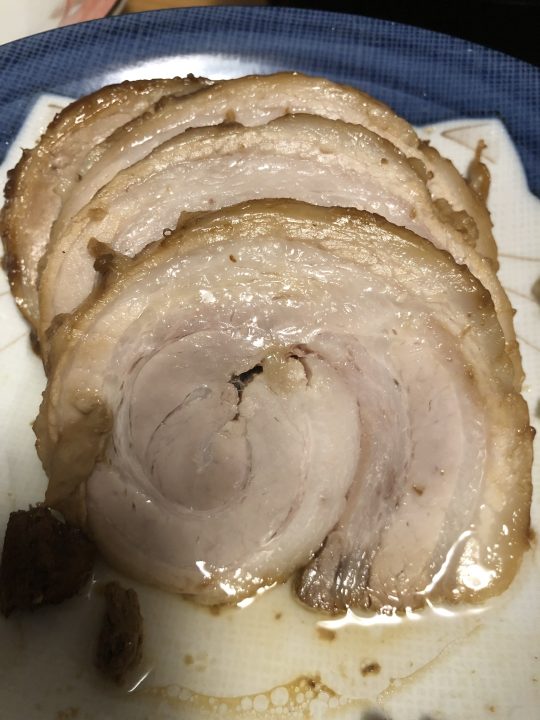
- We freeze the sliced and portioned Cha-shu, wrapped and in ziplock bags.
